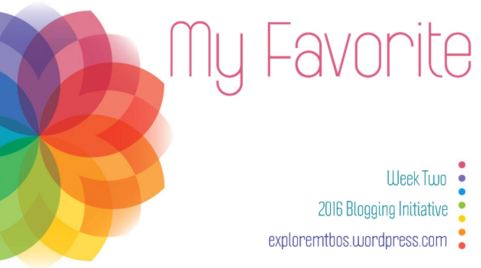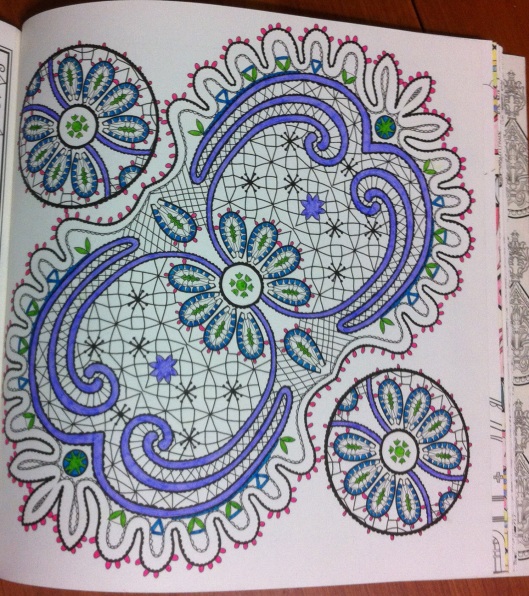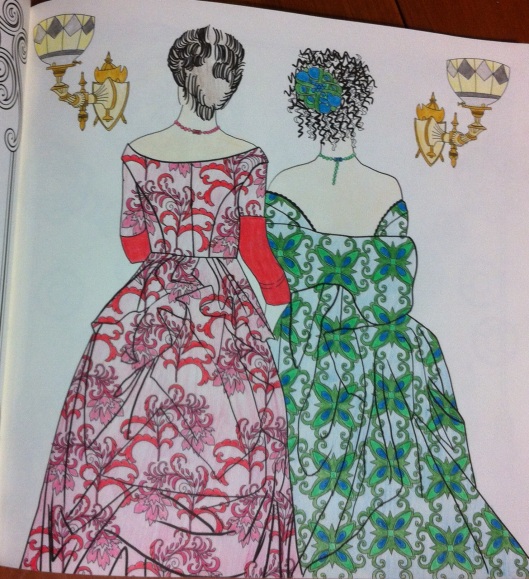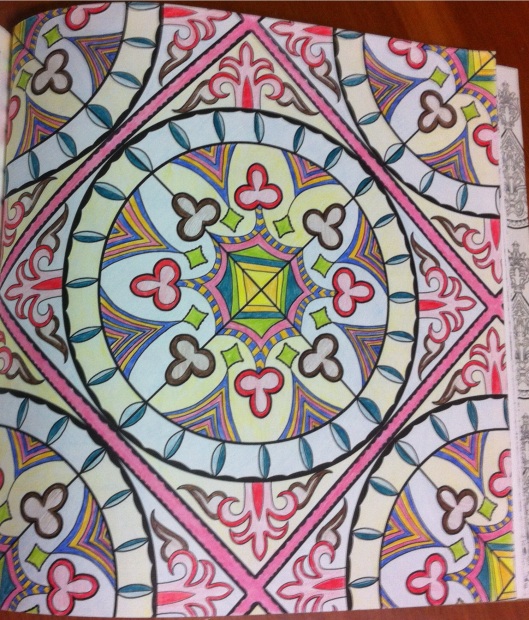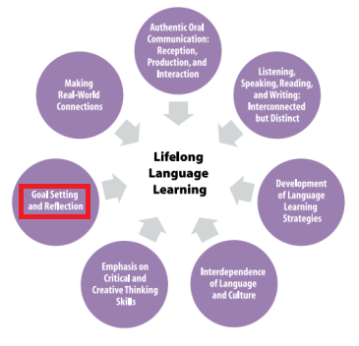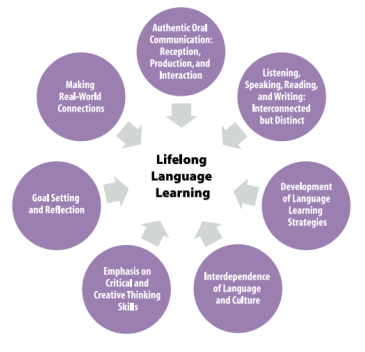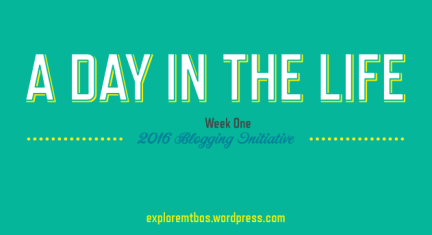
So I’ve chosen today (Thursday) as my day in the life, but I can’t truly say it’s a typical day with some extra after school events. Regardless, I made the commitment and I’m sticking to it!
5:28am My alarm goes off for the first time. I snooze 2-3 times before rising.
5:50am Out of bed. Make and drink my breakfast smoothie while sifting through Twitter and checking email. Get dressed (in the outfit I preselected last night), do my makeup and hair (I have a lot of hair…thick, straight, and past my waist. Hair alone takes 10 minutes on average), get my pre-packed lunch out of the fridge and bundle up. Clean the snow off my car and quickly shovel as some snow has fallen overnight.
7:15am Finally get in my car and leave for school. Usually I leave at 7, but the shovelling delayed me slightly as did deciding in which style to do my hair today.
7:30am Arrive at school. I’m a little later than usual and I’m slightly annoyed because someone has parked in the spot where I usually park. They also haven’t parked straight because of the snow covering the lines. I begrudgingly pull into the next spot.
7:32am Enter the building with my bags and make the climb to the third floor. Unlock the French Immersion department office and drop my things on my desk. I’m always one of the first staff members to arrive. I like the quiet of the building in the morning – it’s somehow different to me than the quiet after school. I also usually take advantage of the photocopiers not having lineups at this hour, but today I had nothing to copy. I instead delved into some marking.
8:20am Start heading down to my first classroom down the hall for my Grade 10 Academic/Applied French Immersion math class. Class begins at 8:40, but I like to be in the room to welcome my students and set up any materials.
8:40am Period 1: National anthem, announcements, and then down to business. Today is a work period and students have multiple choices of task: the first part of their course culminating which involves creating a portfolio of examples to demonstrate the course expectations, a set of word problems from each area of the course to solve, and some exam review questions. I circulate to answer questions, ask questions, and encourage. I’m always on my feet in this class.
9:55am Bell rings. I head back to my department office to drop my bag.
10:03am Period 2: my prep. I head down to Student Services on the first floor. I’ll be staying late tonight for a grade 8 transition event, and administration is buying dinner for those of us participating. I have to place my Pita Pit order. I meet up with my department head down there and we talk to one of the guidance counsellors about the stacked classes in French Immersion and timetabling for next semester based on some staffing changes that are occurring.
10:50am Back up to the third floor to my department office. Now that my mind is on our timetable I start playing with the Excel Document moving courses and rooms around giving us some options based on who we might get to fill some of our open lines. Check Twitter and email.
11:18am Lunch time. My colleagues begin joining me in our department office. We eat and socialize.
12:13pm Period 3: I head down the hall to a different classroom than my math class for my Grade 12 French Immersion Writer’s Craft class. It was another work period with students completing practice questions for their final exam. We also just had some relaxed life chats and told stories to each other about weird nicknames and then just went on some tangents from there. They’re definitely a fun group of students.
1:28pm Bell rings. Normally I would now be rushing to the second floor gym to change for my gym class, but this week I’m in health, so I head towards the health classroom. On my way, I remember that we have been in the library all this week, and I forgot to tell my class yesterday that we’d be in the classroom, so I hurry to the library to collect the students.
1:35pm Period 4: We all arrive in the health classroom for my Grade 11 Co-Ed French Immersion Health and Physical Education class. And you guessed it, we had a work period! Students are completing some research and investigations related to food choices and their effects on different illnesses as well as larger issues related to food and nutrition in our world.
I like “work periods” in that they allow me to engage and connect with individual or small groups of students and get in some good observations of and conversations about what they’re learning.
2:50pm Final bell. Back to my department office on the third floor for a quick email and Twitter check, and then down to the cafeteria on the first floor for a staff meeting.
3:00pm Our monthly staff meeting today begins with Learning Team time. I’m on a team with two other math teachers and an English teacher, and the four of us have been wrapping our heads around Inquiry-Based Learning in our various disciplines. We have some really rich discussions about instruction and assessment and I enjoy the time we have together.
3:45pm The whole staff meeting begins with agenda items related to a school fundraiser for Syrian refugees, the upcoming Ontario Literacy Test, and our AER committee.
4:30pm Staff meeting wraps up. I linger to discuss triangulation of data in different disciplines with one of the chairs of the AER committee.
5:15pm I head to the staff room on the first floor for the dinner I ordered this morning during my prep. I sit down with my principal and vice-principals, my department head, and some of the guidance counsellors.
6:00pm Grade 8 Course Selection Presentation: Tonight is a presentation run by our Student Services Department for grade 8 students and their families who will be coming to our school next year. We outline graduation requirements, course codes, course offerings in grade 9, and the process for selecting courses. I’m there as a representative of French Immersion as that is the largest program at our school. Following the main presentation, my department head and I give a brief overview of Immersion certificate requirements as well as the courses we offer, and then we field questions from a pretty packed auditorium. I address hesitation about pursuing math in French as in general, I find the students benefit more if they take more courses in French.
7:30pm I climb the stairs back up to the third floor one more time to collect my bags and coat from my department office. The school is quiet again as it was 12 hours ago when I arrived.
7:45pm I arrive home and check my work email. I reply to messages from two of my math students who need help with their culminating portfolios. I have a quick snack and sit down to blog.
9:30pm Time to prepare for tomorrow. I pack my lunch, pick tomorrow’s outfit, set my school bags by the door, and set out my ingredients for tomorrow morning’s smoothie.
10:30pm (hopefully!) Bedtime, and dreams of beautiful math equations.
